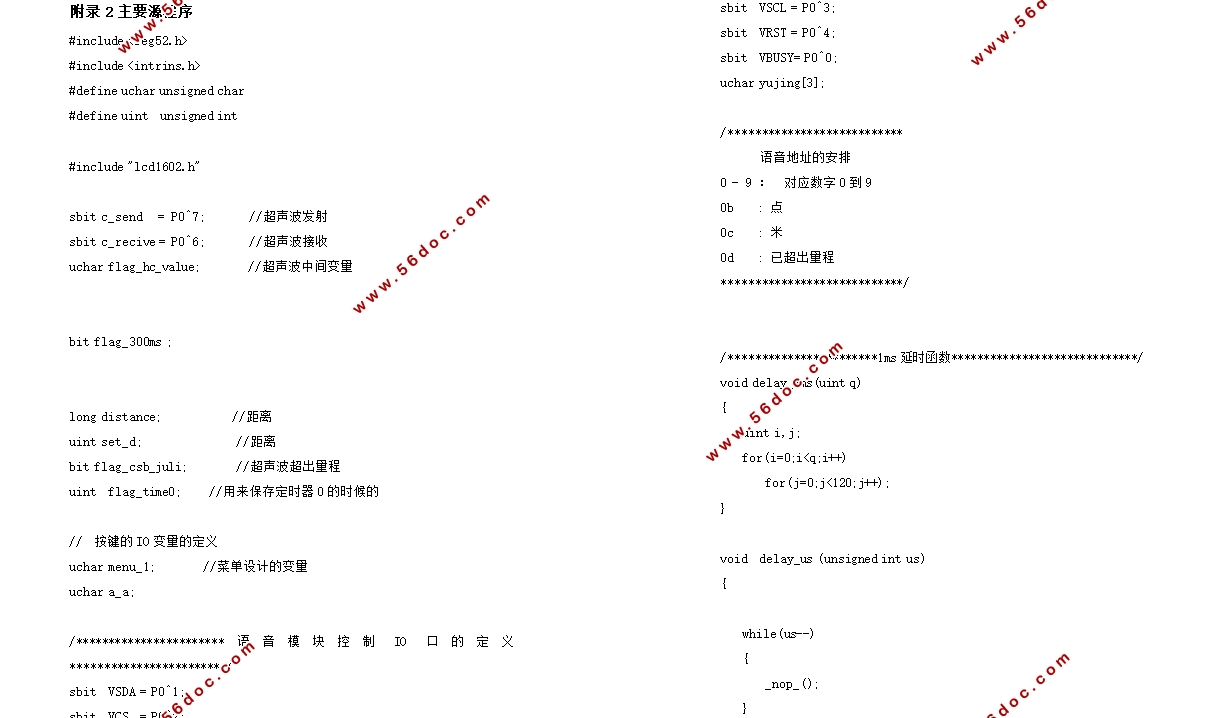语音播报超声波测距系统设计(任务书,开题报告,外文翻译,论文10500字)
摘 要
本设计要求测量范围在50cm~500cm,测量精度1cm,测量时与被测物体无直接接触,能够清晰稳定地显示测量结果。由于超声波指向性强,能量消耗缓慢,在介质中传播的距离较远,因而超声波经常用于距离的测量。我的超声波测距仪设计采用HC-SR04模块实现了超声波的发射与接收。采用STC89C52单片机为该测距仪的控制核心,此设计易于调试,成本低廉,具有很强的实用价值和良好的市场前景。由STC89C52控制定时器产生一定频率脉冲,计算从发射到接收回波时间,从而得到实测距离,数据处理采用,lcd1602显示距离,WTD588D语音播报测量的距离。
关键词:超声波传感器 单片机 测距仪 语音
The audio of ultrasonic ranging principle:
Abstract
Electronic distance measurement instrument for measurement in the range of 20cm-2.5m, precision 1cm, with the measurement of the measured object without direct contact, can clearly demonstrate the stability of the measurement results. Because of the strong point of ultrasonic energy consumption, slow, medium of communication in the longer distance, which are often used for ultrasonic distance measurement. My system design using HC-SR04 to realize the ultrasonic transmitter and receiver. Using STC89C52 SCM as the control core of the range finder, this design easy debugging, low cost, has the very strong practical value and good market prospects. This article introduces the design of control based on single chip ultrasonic ranging principle: control by STC89C52 timer produces a certain frequency pulse, calculated from transmitting to receiving echo time, so as to obtain the measured distance, data processing using the temperature compensation, four digital tube display distance, voice broadcast.
Key words: ultrasonic sensor;single chip microcomputer;range finder;
audio



目 录
摘 要 I
Abstract II
第一章 绪论 1
1.1 课题设计背景及意义 1
1.2 国内外研究动态 1
1.3 本课题研究的主要内容 2
第二章 总体方案 3
2.1 方案选择 3
2.2 超声波测距仪的设计思路 3
2.3 使用元件选择 4
第三章 系统的硬件结构设计 7
3.1 STC89C52单片机的功能及特点 7
3.2红外超声测距模块设计 10
3.3.语音播报模块 11
3.4显示模块 14
3.5电路总图 16
第四章 系统的软件设计 17
4.1 主程序流程图 17
4.2 数据计算 18
第五章硬件电路结果测试及误差分析 20
第六章总结 24
致 谢 25
参考文献 26
附录1原理图 27
附录2主要源程序 28
附录3接收数据子程序. 36
|







